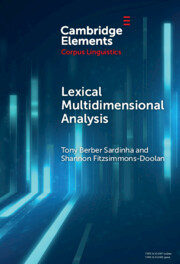Element contents
Lexical Multidimensional Analysis
Published online by Cambridge University Press: 07 February 2025
Summary
- Type
- Element
- Information
- Series: Elements in Corpus LinguisticsOnline ISBN: 9781009335683Publisher: Cambridge University PressPrint publication: 27 February 2025

